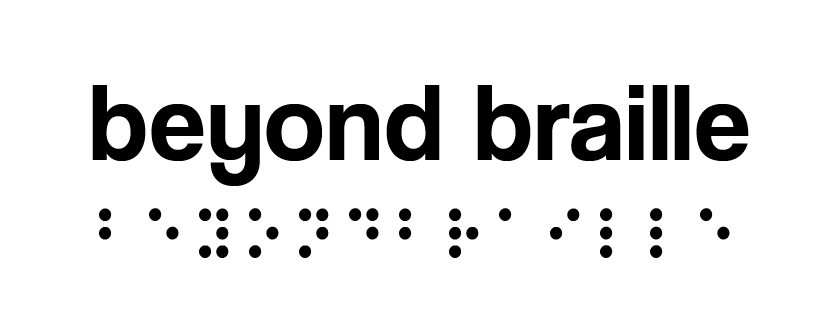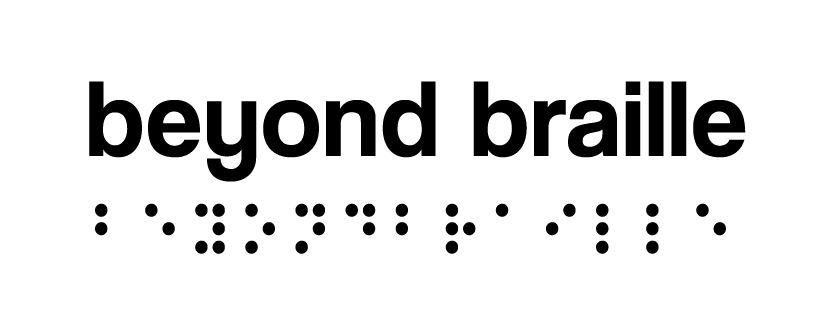The Answers to All Your Questions
We hope that the questions answered throughout this page can provide you with the information you need to know more about blindness or visual impairment.
What is Braille?
Braille is a system of raised dots, which is widely used by visually impaired that can be read and written with the help of touch.
Braille was discovered by Louis Braille in 1821, consisting of raised dots arranged in "cells." A cell is made up of six dots that fit under the fingertips, arranged in two columns of three dots each.
Each cell represents a letter, a word, a combination of letters, a numeral or a punctuation mark.
How do blind people read? How can beginners learn braille?
Blind or visually impaired read with the help of braille script and tactile pictures with the help of their fingertips. Picture the side of a dice with the number 6, those two rows of dots are the basic setup for braille.
Learning braille is relatively simple, but like any new skill, it takes time to train their fingers to sense the dots with the help of touch.
The best method to learn braille is to let the beginners play with the letters by forming patterns and pretend to write before you ask them to produce conventional braille characters.
The learning process for beginners is either self-taught at home with the help of a few online resources in some guidance and support or is taught with the help of teachers at schools/ institutions.
What do blind people read?
Blind people read all sorts of content with the help of Braille script. With Beyond Braille, they can now also read tactile pictures to sense the true shapes of the objects/figures given and relate to it.
What are tactile picture books?
A tactile picture book is a book that is read with the fingers. The pictures in a tactile picture book consist of raised objects and figures. Of course, the images are simplified to make them easier to understand.
Many special needs children are tactile learners. Tactile and sensory products can bring a fun and colorful approach to their challenging issues. These tools also help develop fine motor skills, build confidence and self-esteem in them.
In India, tactile picture books exist but they are not mainstreamed yet; such books are usually kept in libraries for reference purposes. Seeing this situation, we thought this could be a pressing problem, and this needs to be identified, and there has to be a solution.
Yet this is precisely the reason Beyond Braille thought of developing tactile picture books for the visually impaired community in comparison with the existing braille books.
Which are the braille books for blind children and adults?
There are a number of braille books available at all sources for visually impaired. Majorly they are found in schools and institutions who specifically run for the blind students.
With Beyond Braille, you can find all types of braille books for early learners like storybooks, dictionary books, to self learning braille picture books like basic maths and other essential tactile braille books to start from.
Why braille books are expensive?
The braille books are usually expensive than most regular school/college textbooks. The underlying reason is that the braille dots are embossed or raised, due to which the cost of the technology also becomes expensive, thereby the books also become more expensive.
But with our range of Beyond Braille, the books and materials are designed in a manner such that it is cost-effective and durable in comparison with the existing tactile braille books available in the market.
Is visually impaired the same as blind?
No they are different. People are usually confused about using the correct terminology while referring to a person with visual impairment. Let's understand what each means:
While visually impaired refers to a condition where the person does not have a perfect or near perfect vision, which cannot be repaired via usual means, such as glasses or contacts.
Blindness refers to a condition where the person is not in the state of seeing anything, i.e. complete or nearly complete vision loss.
While both the terms refer to a different ability, the best practice is to use visually impaired to address someone with visual impairment or blindness.
What is Blindness? What are the types of Blindness?
Blindness is the inability to see anything with your eyes, not even light. It happens when the person entirely loses their vision. There are mainly three primary types of blindness as followed:
- Night Blindness - the difficulty of seeing in low and dim lights.
- Color Blindness - an inability or difficulty to perceive different shades of colors.
- Snow Blindness - loss of vision when exposed to ultraviolet light.
Another type of blindness is congenital blindness in which a person is born blind. It usually happens when the organ is not developed properly or could be due to some complications throughout the pregnancy. In either of the cases, the person is born blind and cannot see due to underdeveloped organs.
What kind of books are available for the blind? Which are the books for people who cannot see?
All types of books are available for the blind, ranging from braille text books, large print books, tactile braille picture books and all digitally formed audio books.
Which are the braille storybooks available?
Storybooks available for young children with Beyond Braille are these famous fables with titles like "The Hare and The Tortoise", "Bas Ganesha", "Ranchhod Sees the World" and many such tactile braille picture books.
How long does it take to learn braille?
Anyone can learn braille, the more you practise the more easy it becomes to grasp it. On average, it takes about three to four months to learn the un-contracted version of braille and upto eighteen to twenty four months to learn the contracted version.
What is contracted braille? Grade 2 braille?
On average contracted braille is used by more experienced braille users. It uses the same letters, numbers, and punctuation marks as Grade 1 uncontracted braille, but adds a series of special shorthand signs to represent a group or common words.
How long does a blind take to learn pictures?
Like most of the people, a visually impaired also generates curiosity to explore the world through pictures.
Thus learning to respond to sensory cues as well as to use the available tactile picture materials enables a blind person to learn pictures based on their own comprehension time ranging from six months to two years.


